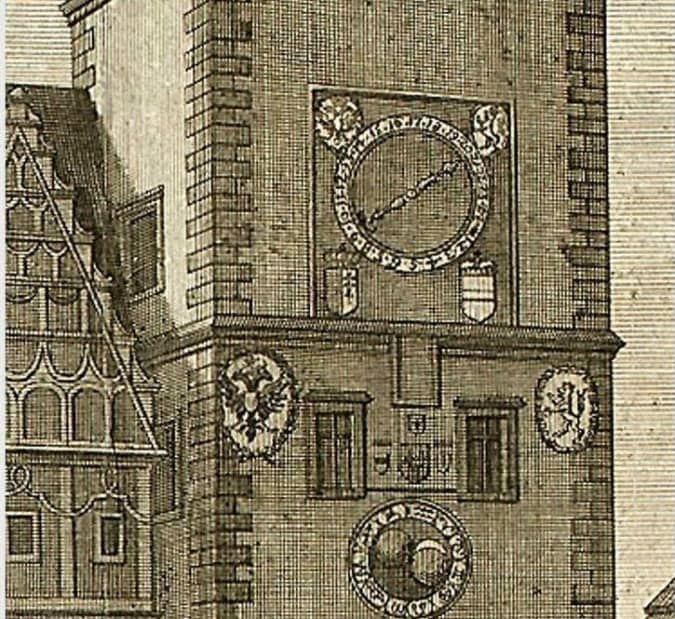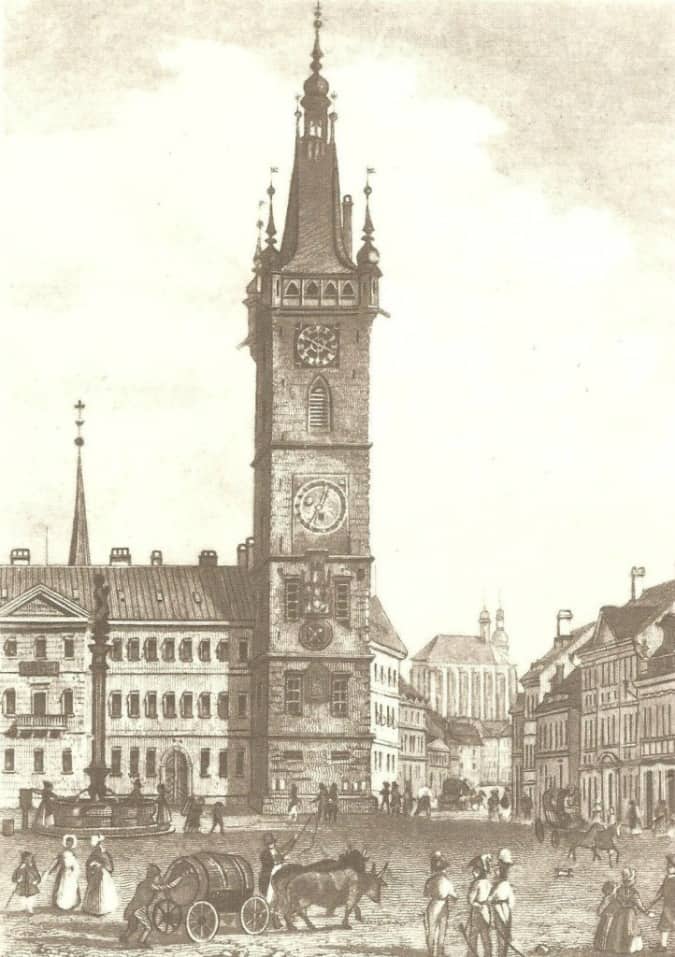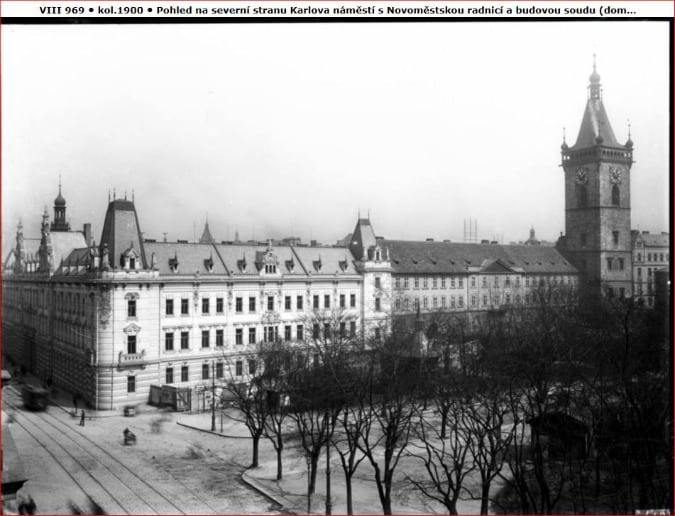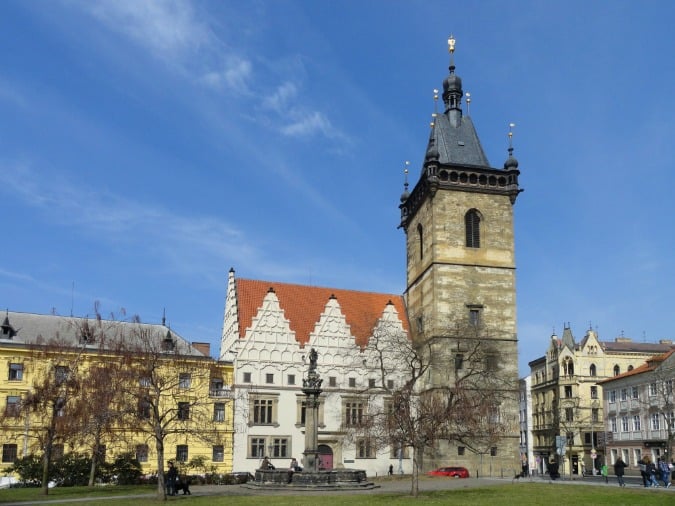From the mid 15th to the late 18th century, Prague not only boasted its famed medieval astronomical clock in Old Town Square but an astronomical clock in its New Town quarter. Called the Novoměstský orloj, it was located in the New Town Hall at Karlovo náměstí.

The New Town Astronomical Clock was not as impressive as its Old Town cousin in terms of architectural splendor, and it wasn’t adorned with the same figurative decorations and statues. What was interesting about this clock, however, was that it was an Italian-style astronomical clock. Its most famous counterpart can be found in the Italian town of Padua on the Palazzo del Capitano (some consider the Padua clock, built in 1344, destroyed by fire in 1390, and rebuilt in 1423, the world’s oldest).

On the original Padua clock, in the center of its large face, were hemispheres that illustrated the appearance of the globe. Concentric circles showed the current phases of the moon and the position of the sun in the zodiac. The outer circle was a 24-hour clock. The Padua astronomical clock was ornamented with an emblem of the sun.

The clock on the New Town Hall tower was smaller than its Padua counterpart. The preserved displays showed the phases of the moon and the zodiac signs. The clock also displayed the positions of the sun. There was no outer 24-hour circle on the New Town Hall clock.

It is curious that both the Padua and the New Town astronomical clock depicted only eleven signs of the zodiac. Legend has that in Padua, one sign was missing because the artisans were not paid properly and excluded it out of revenge.
As for the sign missing from the New Town astronomical clock, historians say it was likely just an honest omission, although most likely the designers had poorly plotted the drawing and the twelfth sign simply did not appear on the astrolabe.

Archivists say that the New Town orloj was probably created as part of an ancient rivalry between the Old Town and the New Town of Prague, independent towns until 1784.
The gears of the New Town astronomical clock were removed at the end of the 18th century and the niche between the ceiling of the chapel and the second floor was filled with bricks. The Old Town astronomical clock just barely escaped a similar fate.

Photos and text courtesy of Miluju Prahu. See here for original Czech language post.
For more stories of long-lost Prague landmarks, see here.













 Reading time: 2 minutes
Reading time: 2 minutes 




















